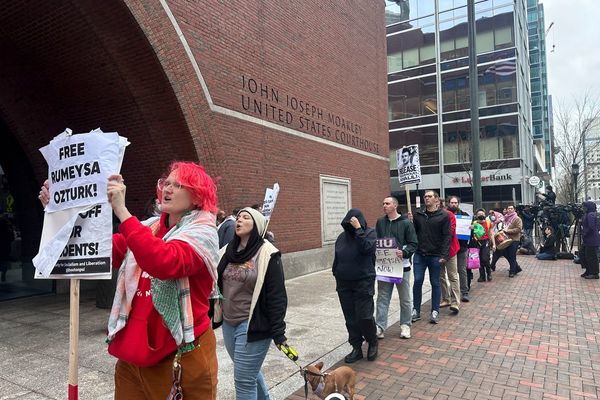
Humanity still has time to arrest catastrophic global warming – and has the tools to do so quickly and cheaply, the Intergovernmental Panel on Climate Change (IPCC) has found.
The latest IPCC assessment report, the world’s definitive stocktake of action to minimise climate change, shows a viable path to halving global emissions by 2030.
This outlook is much more favourable than in earlier assessments, made possible by tremendous reductions in the cost of clean energy technologies. But broad policy action is needed to make steep emissions reductions happen.
We each contributed expertise to the report. In this article, we highlight how the world can best reduce emissions this decade and discuss the potential implications for Australia.

All-in, right now
- Frank Jotzo, lead author on policies and institutions
The IPCC identifies clean electricity and agriculture/forestry/land use as the sectors where the greatest emissions reductions can be achieved, followed by industry and transport.
Further low-emissions opportunities exist in other areas of production, buildings and the urban sector, as well as shifts in consumer demand. Overall, half the options to cut emissions by 50% cost less than US$20 a tonne.
While the IPCC does not provide a country-level assessment, it is clear Australia has all these opportunities.
The transition to zero-emissions electricity is well underway. Decarbonising industry and transport is a next step. Emerging technologies such as green steel and hydrogen offer Australia new, clean export industries. Fossil fuel use in turn is destined to fall, with coal dropping off particularly quickly.
And Australia’s large land mass provides massive opportunities to remove CO₂ from the atmosphere through plants – and in future, perhaps also through chemical methods.
The IPCC says comprehensive policy packages are needed to make deep emissions cuts happen.
À lire aussi : IPCC finds the world has its best chance yet to slash emissions – if it seizes the opportunity
It finds carbon taxes and emissions trading schemes have been effective, alongside targeted regulation and other instruments – such as support for research and development, uptake of advanced technologies and removing fossil fuel subsidies.
The report also emphasises the need for continued technological innovation, and to greatly scale up finance for climate action.
It puts weight on the importance of equity, sustainable development and comprehensive engagement across society to avert unmanageable climate change.
That requires climate action to take centre stage in society, involving all manner of groups. Independent institutions such as Australia’s Climate Change Authority have a strong role to play, and business should be actively involved.
So what’s the IPCC’s overriding message? The world’s governments must go all-in on addressing climate change. The opportunities are there and the toolkit is ready.

Food for thought
- Annette Cowie, lead author on cross-sectoral perspectives
To have our best shot at holding warming to 1.5℃, the world must hit net-zero emissions by mid-century.
Agriculture is a big contributor to global emissions. But the IPCC confirms the land also has a central role in getting to net-zero through measures that remove CO₂ from the atmosphere and store it, such as tree planting, soil carbon management and the use of biochar.
Benefits returned to farmers include improved soil fertility and income from carbon trading.
The way we produce and distribute food accounts for more than one-third of global emissions.
The report says one of the biggest individual contributions we can make to reducing emissions is adopting a sustainable, healthy diet and reducing food waste. Such a diet is rich in plant-based food, with moderate intake of meat and dairy.
We can also tackle direct emissions from food production. Manure can be made into biogas and feed additives offer promising ways to reduce livestock methane.
À lire aussi : The Morrison government wants to suck CO₂ out of the atmosphere. Here are 7 ways to do it

Moving the dial on transport
Peter Newman, coordinating lead author on transport
Jake Whitehead, lead author on transport
A set of technological solutions now exist to reduce emissions across energy, buildings, cities, transport and to a large extent, industry.
They include solar and wind-based power – now the cheapest form of electricity. They also include batteries and storage, electrified transport and “smart” technology that integrates these measures into zero-emissions solutions.
The IPCC report shows in the past decade, unit costs for solar have fallen by 85%, wind by 55% and batteries by 85%. Never before has the world had such an opportunity to decarbonise.
In recent decades, transport has been the laggard in emissions reduction. But, as the IPCC finds, technologies now exist to change the trajectory. Solar-powered electrification is rolling out for cars, bikes, scooters, buses and trucks.
Continuing advances in battery and charging technologies could enable the electrification of long-haul trucks, including electrified highways.
The IPCC assessed 60 actions individuals can take to reduce emissions. The largest contributions come from walking and cycling, using electrified transport, reducing air travel, as well as shifting towards plant-based diets.
This highlights how our individual choices matter.
À lire aussi : Thinking of buying an electric vehicle for your next car? Here's the market outlook and what to consider
Technology alone is not enough to reduce transport emissions. Cities must become more oriented toward public transport, walking and cycling. Effective new ways of doing this include on-demand shuttles, trackless trams and high speed rail.
Governments should provide incentives to supply and use electric scooters, bikes, cars, trucks and buses. This would ensure individuals and businesses who want to reduce their emissions have ways to do so.
The IPCC says cheap green hydrogen will be important to decarbonise aviation, shipping and parts of industry and agriculture. Much work is required in the next decade to bring this solution to fruition.
While government funding is vital to decarbonise transport, this transition also presents significant economic opportunities.
Australia could support transport decarbonisation globally through the mining of critical minerals, as well as the manufacturing, reuse and recycling of electric vehicles.

It’s time to act
Huge untapped potential exists to reduce global emissions quickly.
But the window of opportunity to reduce greenhouse gas emissions to safe levels is closing at an alarming rate. As the IPCC shows, fundamental change to both production and demand is required.
Clearly, business-as-usual is no longer tenable. The IPCC makes one thing patently evident: the time for action is well and truly upon us.
Arunima Malik, Glen Peters, Jacqueline Peel, Thomas Wiedmann and Xuemei Bai contributed to this article. See part one of the article here.
Frank Jotzo is a professor at ANU Crawford School of Public Policy and the ANU Institute for Climate Energy & Disaster Solutions. He is a lead author and contributor to the Summary for Policymakers of the IPCC 6th Assessment Report, and a lead author of the 5th Assessment Report. He has led research projects funded by a variety of funders; none present a conflict of interest on this topic. The Australian government provided funding to support IPCC related activities, while the author's (and all authors') activities for the IPCC are not remunerated.
Annette Cowie is a Senior Principal Research Scientist in the climate branch at the NSW Department of Primary Industries, in a addition to her UNE role. She receives research funding from NSW and Commonwealth government programs and rural research and development corporations. She is a member of Soil Science Australia and an adviser to the Australia New Zealand Biochar Industry Group and the Land Degradation Neutrality Fund.
Dr Jake Whitehead is on unpaid leave from his role as a Research Fellow at The University of Queensland. He is a Lead Author of the AR6 Transport Chapter for The Intergovernmental Panel on Climate Change (IPCC), a Member of the International Electric Vehicle Policy Council, and Director of Transmobility Consulting. He has previously received government funding for several sustainable transport projects, including research on both hydrogen and electric vehicles. He is also holds a part-time position as the Head of Policy at the Electric Vehicle Council.
Peter Newman AO is Professor of Sustainability at Curtin University and has been involved in IPCC reports for the past ten years. The Federal Government has provided travel funds for meetings though the past few years have all been on-line. Like all authors in IPCC this is a voluntary activity.
This article was originally published on The Conversation. Read the original article.







